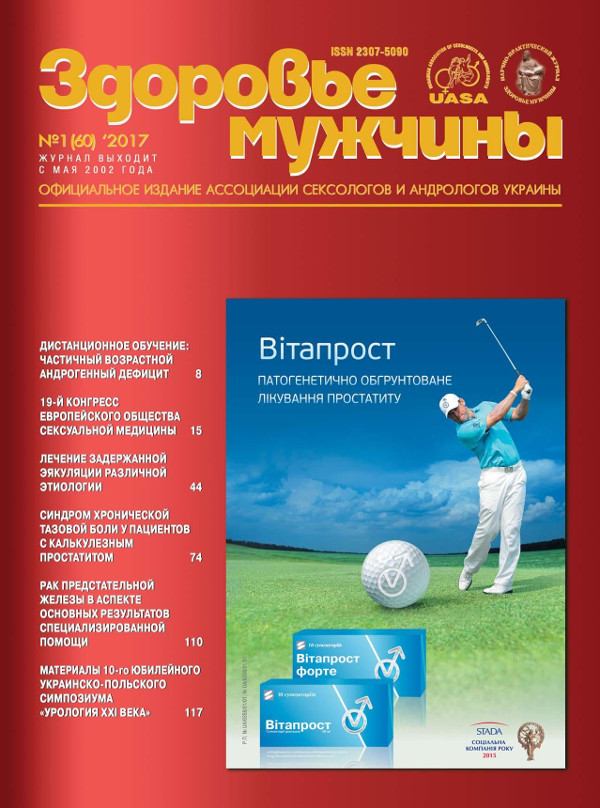Лікування гіперактивного сечового міхура у чоловіків: нові можливості та перспективи
##plugins.themes.bootstrap3.article.main##
Анотація
##plugins.themes.bootstrap3.article.details##

Ця робота ліцензується відповідно до Creative Commons Attribution 4.0 International License.
Автори зберігають авторське право, а також надають журналу право першого опублікування оригінальних наукових статей на умовах ліцензії Creative Commons Attribution 4.0 International License, що дозволяє іншим розповсюджувати роботу з визнанням авторства твору та першої публікації в цьому журналі.
Посилання
Abrams P., Cardoso L., Fall M. et al. The standardization of terminology of low urinary tract function: report from the standardization sub_committee of the ICS // Urology. – 2003. – 61. – Р. 37–49.
Bissada N.K., Finkbeiner A.E. Lower urinary tract function and dysfunction. – N.-Y.: ACC, 1978. – 276 p.
Irwin D., Milson I., Reilly K. et al. Prevalence of overactive bladder syndrome: European results from the EPIC study// Eur. Urol. Suppl. – 2006. – Vol. 5, No 2. – P. 115.
Пирогов В.О., Зайцев В.І., Сівбистянова Н.А., Андреєва І.А. Нейрогенний сечовий міхур. Частина 2. Загальні принципи діагностики та лікування// Урологія. – 1997. – No 3. – С. 74–81.
Harvey MA, Baker K, Wells GA. Tolterodine versus oxybutynin in the treatment of urge urinary incontinence: a meta_analysis // Am J. Obstet Gynecol. – 2001. – Vol. 185. – Р. 56–61.
Chapple C.R., Rechberger T., Al-Shukri S. et al. Randomized, double-blind placebo and tolterodine_controlled trial of the once-daily antimuscarinic agent solifenacin in patients with symptomatic overactive bladder // BJU International, – 2004. – Vol. 93. – Р. 303–310.
Chapple C., Fiala R., Gorilovsky L., Pasechnikov S. et al. The STAR study: analysis of symptom severity and treatment response in overactive bladder // Eur. Urol. Suppl. – 2006. – Vol. 5 (2).– Р. 117.
Chancellor M, Zinner N, Whitmore K et al. Efficacy of Solifenacin in patient previously treated with tolterodine extended release 4 mg: result of 12 – week, multicenter, open-label, flexible-dose study. Clin Ther 2008; 30: 1766–81.
Garely AD, Kaufman JM, Sand PK et al. Symptom bother and health-related quality of life outcomes following solifenacin treatment for overactive bladder: the Vesicare Open Label Trial (VOLT). Clin Ther 2006; 28: 1935–46.
Samuels TA, Mitcheson HD, Vardy MD et al. Solifenacin significantly improves overactive bladder symptoms, symptom-associated bother and other patient-related outcomes: Results from VIBRANT, a double-blind, placebo-controlled trial. EAU annual meeting, 2009; (Abstr. 190).
Drake MJ, et al. Long-term Safety and Efficacy of Single-tablet Combinations of Solifenacin and Tamsulosin Oral Controlled Absorption System in Men with Storage and Voiding Lower Urinary Tract Symptoms: Results from the NEPTUNE Study and NEPTUNE II Open-label Extension. Eur Urol (2014), http://dx.doi.org/10.1016/j.eururo.2014.07.013.





